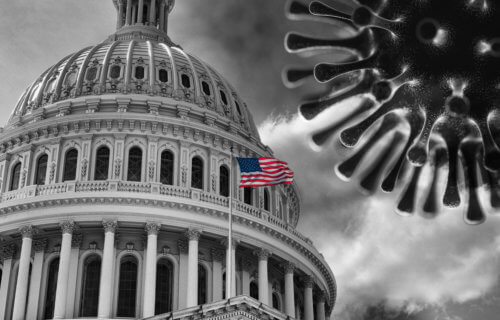COLUMBUS, Ohio — COVID-19, and all of the challenges and heartbreak it’s brought, should have motivated the global community to come together. In a perfect world, we’d put aside our differences and collaborate to beat this pandemic. Unfortunately, both internationally, and domestically in the United States, the coronavirus has been used far more often to divide or achieve personal political gain.
Now, a new study from The Ohio State University reveals just how quickly COVID-19 became a polarizing topic in American politics.
Researchers analyzed tweets sent out by members of Congress concerning COVID-19 since it emerged earlier this year. Using AI, 30,887 tweets were included in the research, all of which had been posted between January 17th and March 31st of this year.
The algorithm used by the study’s authors was able to identify the political affiliation of each tweet’s author based on nothing but the message’s content and date 76% of the time.
“We found that once the parties started to figure out the political implications of the issue, polarization was evident in the tweets pretty quickly,” says study co-author Jon Green, doctoral student in political science at The Ohio State University, in a release.
“It is remarkable that we could identify partisanship even when members have only 280 characters to send their messages in Twitter,” adds co-author Skyler Cranmer, the Carter Phillips and Sue Henry Professor of Political Science at OSU.
How COVID-19 debate infected Americans politics
Democrats tweeted about the coronavirus far more often (19,803 tweets) than their conservative counterparts (11,084). Even as the first documented cases of communal COVID-19 spread in the United States were reported in California, and then later on when a national emergency was officially announced, Democrats continued to tweet more frequently about the developing pandemic.
“This suggests Democratic members were sending earlier and stronger signals to their constituents that they should be concerned about the crisis,” Cranmer comments.
Of course, the sentiments and messages being conveyed by Republicans and Democrats were quite different as well. For instance, Democrats used the word “health” in 26% of their tweets, while Republicans only used that word 15% of the time.
Democrats were also far more likely to discuss the safety and health of the American public, and the challenges facing American workers. Republicans, on the other hand, usually focused on topics like China, U.S. businesses, the need for national unity, and referring to the pandemic as a “war.”
The AI used by the researchers also looked out for “partisan overlap,” or tweets that conceivably could have been sent out by either a Republican or a Democrat. Such tweets often confused the algorithm in its attempts to guess if a conservative or liberal posted the message in question.
Among all the analyzed tweets, though, only 31% were classified as crossing party boundaries.
“That means for 69 percent of members, their tweets are more partisan than the most similar member of the other party,” Green explains.
Ebbs and flows of polarization
The research also suggests that COVID-19 polarization has fluctuated over time. While analyzing tweets sent out early on in the pandemic, the AI system had a much harder time picking out conservative or liberal tweets.
However, polarization rose quickly in the coming weeks. By February 9th polarization peaked, declined somewhat afterward, then saw another big uptick in late March. Polarization probably increased again in March because that was when parties were discussing possible economic relief plans.
With all this in mind, the study’s authors say that Congress missed out on an opportunity to put together a plan for this pandemic back in February before the entire situation became muddied by politics.
“Something on the scale of COVID-19 requires a large-scale government response. The government can respond much better when it is united in its mission,” Cranmer concludes.
The study is published in Science Advances.
Like studies? Follow us on Facebook!
